Even though I’ve always favored the big cats, particularly tigers, where to see rhinos is usually at the top of my list on any safari I take. Maybe it was the difficulty I experienced in finding them early in my travels, but whatever the reason, they have remained a priority. As such, knowing where to see rhinos in Uganda was important to me.
Humans can be terrible at times, and even worse when they’re misled. The white rhinos of Uganda felt the brunt of this back in the 1980s.
Civil wars plagued the country of Uganda in the 1970s and early 1980s. While the government was distracted fighting civil unrest, poachers took advantage of the opportunity to hunt the beautiful white rhinos for their prized horns.
On the black market, rhino horn prices average $60,000 per pound. A single horn weights 3.3-6.6 pounds on average, so that’s A LOT of money. They’re worth more than gold or diamonds!
Rhino horn is made from a substance called keratin, which is a protein found in fingernails and hair. Primarily in Asian countries, it is used as a traditional folk medicine and is falsely claimed to help treat everything from cancer to gout when consumed in its powder form.
This has been disproven countless times. There is no medicinal benefit of rhino horn in humans. So please, cut the crap.
These are the same parts of the world that also think the hairs from a giraffe’s tail cures AIDS.
I can’t help but sigh and shake my head in exasperation.
Then, making the situation even worse, owning rhino horn has become a sign of wealth and status in China.
In 1983, rhinos were declared extinct in Uganda.
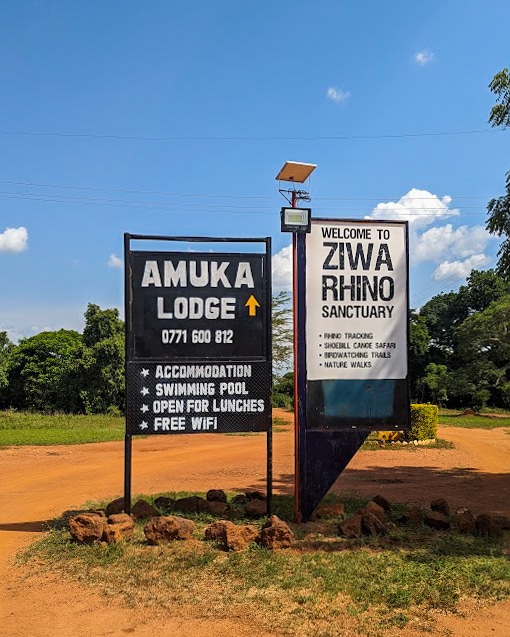
Enter the Ziwa Rhino Sanctuary
The Ziwa Rhino Sanctuary is a private, non-profit, animal sanctuary in Uganda.
It was established in 2005 with the goal of re-introducing southern white rhinos to the wild. Currently, it is the only place where to see rhinos in the wild in Uganga.
The sanctuary is a joint effort between the Ziwa Rhino and Wildlife Ranch, who owns the sanctuary land, and the Uganda Wildlife Authority.
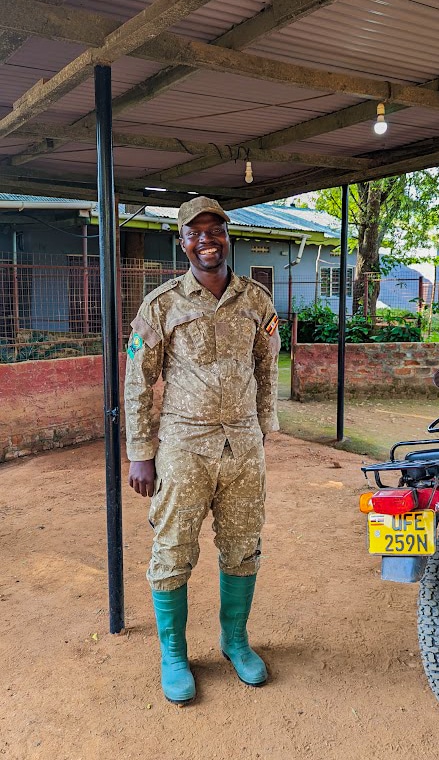
My guide Derrick, helping me out and telling me the history of Ziwa!
How it began
Things started in 2001 when the first two rhinos were taken to the Entebbe Zoo to raise awareness about these endangered animals.
The sanctuary was then officially founded in 2004, but it wasn’t until 2005 when the first four rhinos arrived from Kenya. Then in 2006, two more were donated by the Disney Animal Kingdom. This initial group was enough that breeding began, and in 2006, the first white rhino calf was born. The calf was born to Kenyan and American rhinos, so they named it Obama.
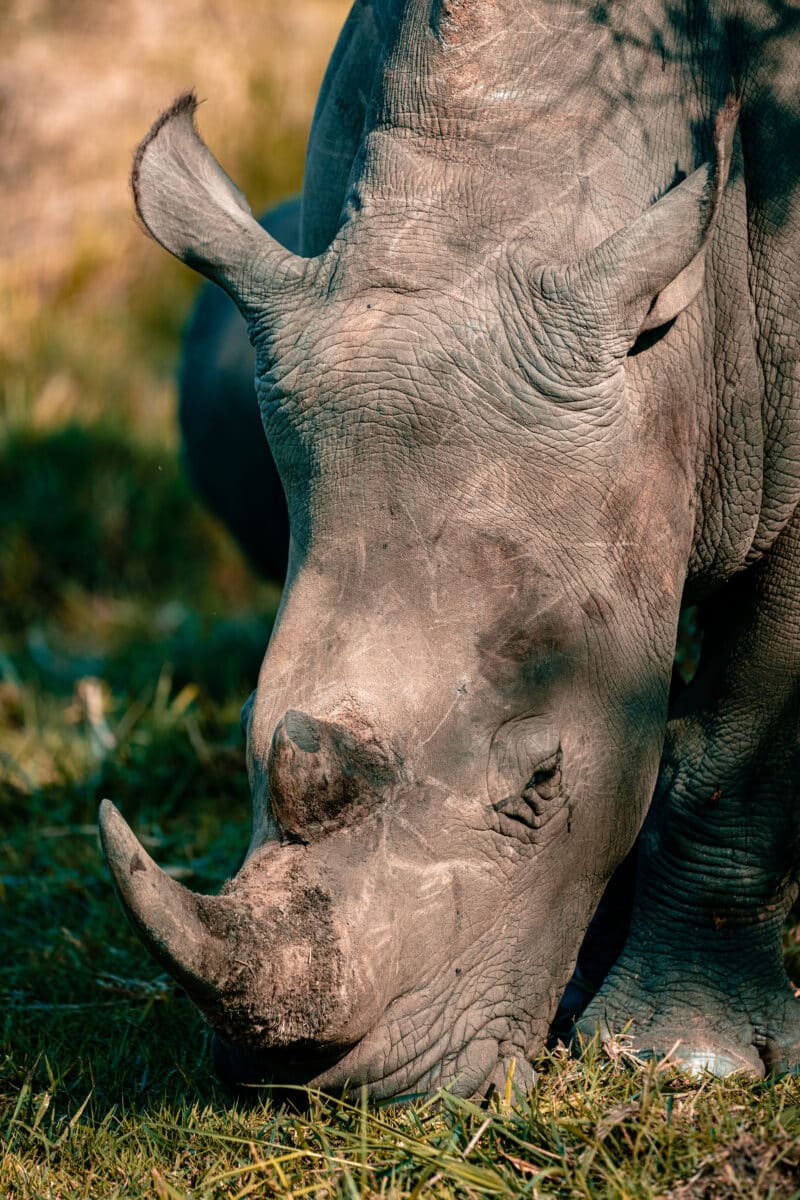
Rhinos spend about half of their waking hours eating. That’s around 120 pounds of grass per day!
How it’s going
As of 2022, the ranch is currently home to thirty-three rhinos. Their ultimate goal is to breed them up to a total of fifty and above before reintroducing them into the wild at Murchison Falls National Park, their native territory within the next ten to fifteen years.
The park
In addition to the rhinos, the park also plays home to forty mammal and reptilian species. These include monkeys, antelope, hippos, crocodiles, and numerous types of birds.
Unlike most other parks in Uganda, the 70-square-km Ziwa Rhino Sanctuary is completely enclosed by a two-meter-high electric fence. The fence is designed to keep the rhinos in, and any intruders out.
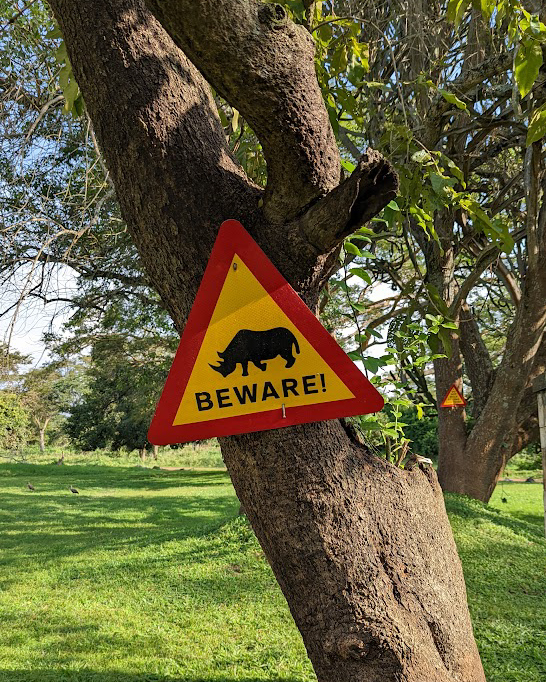
Beware! Rhinos may generally be docile, but they can be dangerous when provoked!
The Rhino Tracking Experience
After pulling up at the park, you’ll be greeted by multiple tourist facilities, including a safari lodge, small gift shop, two restaurants, a guest house, budget accommodations, and a campsite.
I met my friendly guide Derrick outside the lodge for my briefing.
He opened by telling me about the history of the park before getting into the tracking itself.
As I arrived rather late in the day, he told me that I would need to manage my expectations. That’s because later in the day, when I arrived, the rhinos begin to retreat deep into the park where they are much harder to locate due to a swamp.
He told me that we would be lucky if we managed to find one or two. I wanted to see rhinos in Uganda and we found seven!
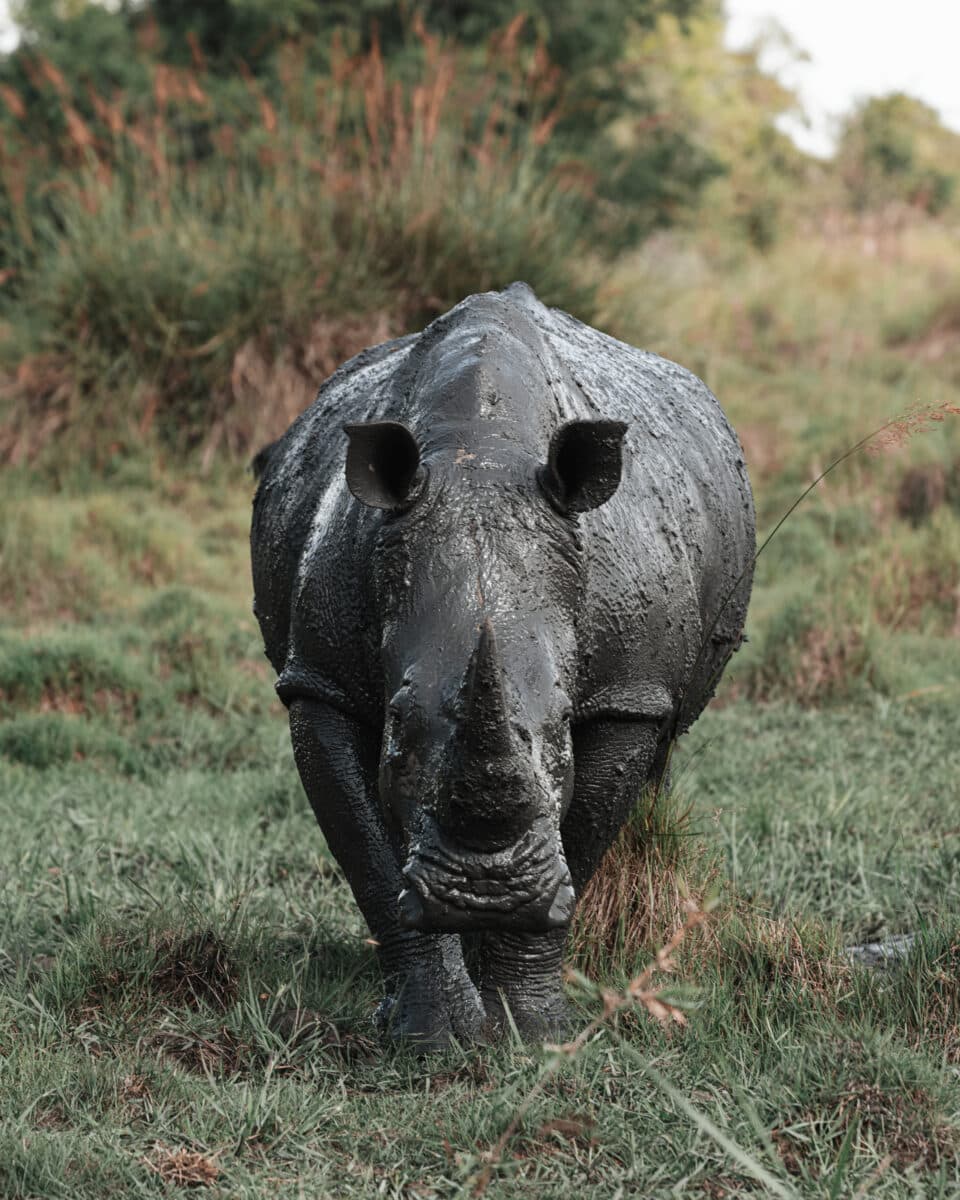
Muddy girl, staring me down. She eventually brushed us back!
Hiking makes it extra special
Something special about where to see rhinos in Uganda is that the Ziwa Rhino Sanctuary has you doing it primarily on foot. You do start out in a vehicle, but after about a ten-minute drive into the park, the road disappears and you get out to hike.
This is a unique experience because in most parks you’re not supposed to exit your vehicles. This is for both your safety, as well as the animal’s. I loved this because it allows you to get closer than you’d ever be able to in a vehicle.
Once we were out of the vehicle, we hiked for about thirty minutes before my guide picked up on a noise and changed directions. A short walk later and we found our first two rhinos, two females wallowing in a large mud puddle to keep cool.
Even without a vehicle, I never would have guessed that we would get as close as we did! My guide told me that white rhinos are fairly tolerant of humans and that if they feel you’re getting too close, they’ll warn you off, well before they decide to charge.
We did get brushed back a few times after they got up to graze. I would have kept a better distance, but while staring through a long camera lens, you start to get tunnel vision and don’t realize how close they’ve walked to you.
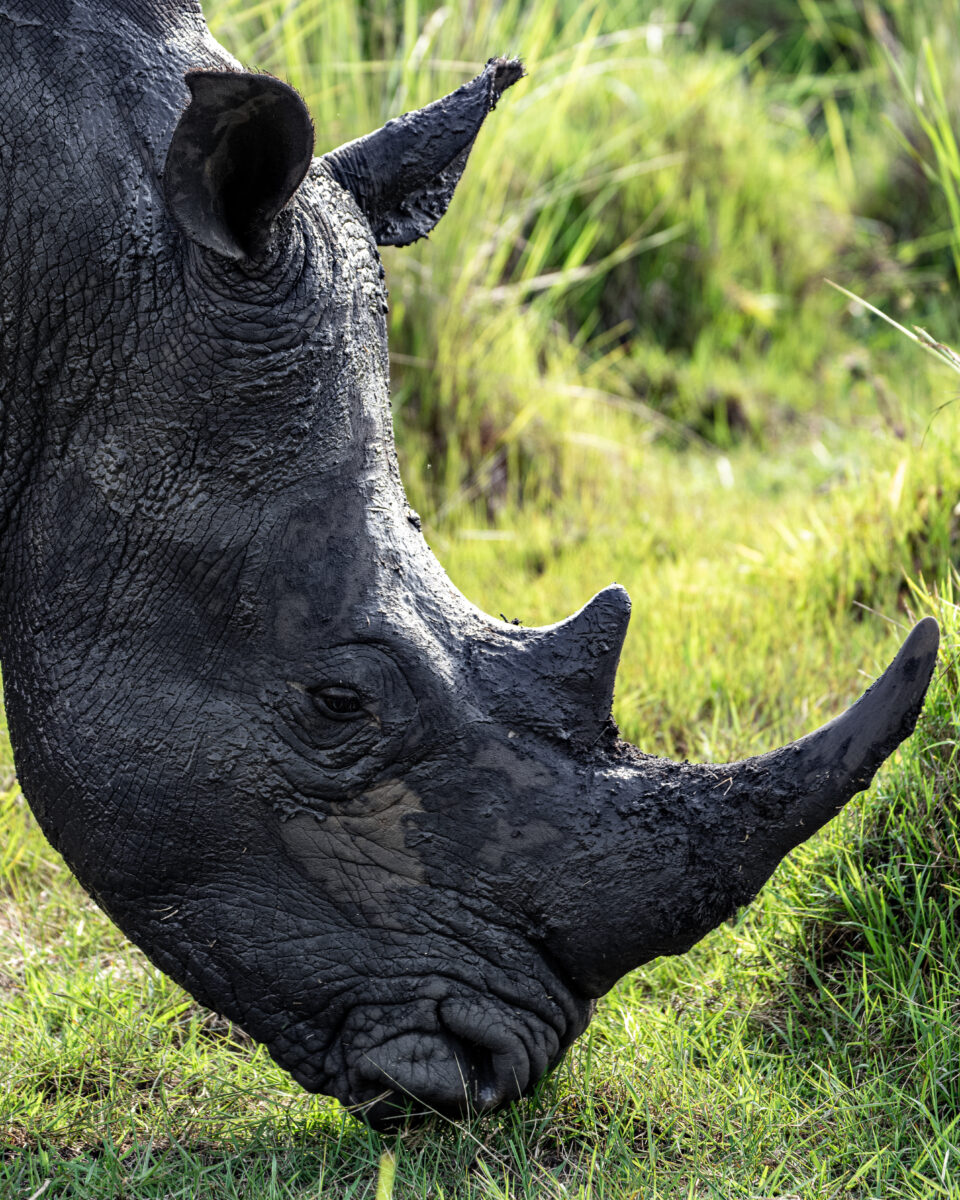
Got horn?
Where to see Rhinos in Uganda – The Bull
As we backed off a final time, my guide wanted to check the area where he initially thought we might find a rhino. He was spot-on in his estimation as we walked right up to an adult male named Augustu, the largest bull in the park.
He told me that this was a pretty big deal as he can be difficult to find.
We immediately noticed that the bull was a bit agitated so we gave him way more space than we did the females. Sorry, it’s not a sexist thing. We just didn’t feel like getting steamrolled by a pissed-off, 7,000-pound rhino!
He was moving much faster than average and marked his territory like crazy. This made my guide a bit suspicious, so rather than chase after him, we headed off in the direction he had come from, hoping to find what had him stirred up.
Sure enough, we soon found the cause. Four lazy slackers, loitering in the shade. All of them teenage males. Figures! It’s not hard to imagine that together they did something to irritate him enough that he’d mark the entire area.
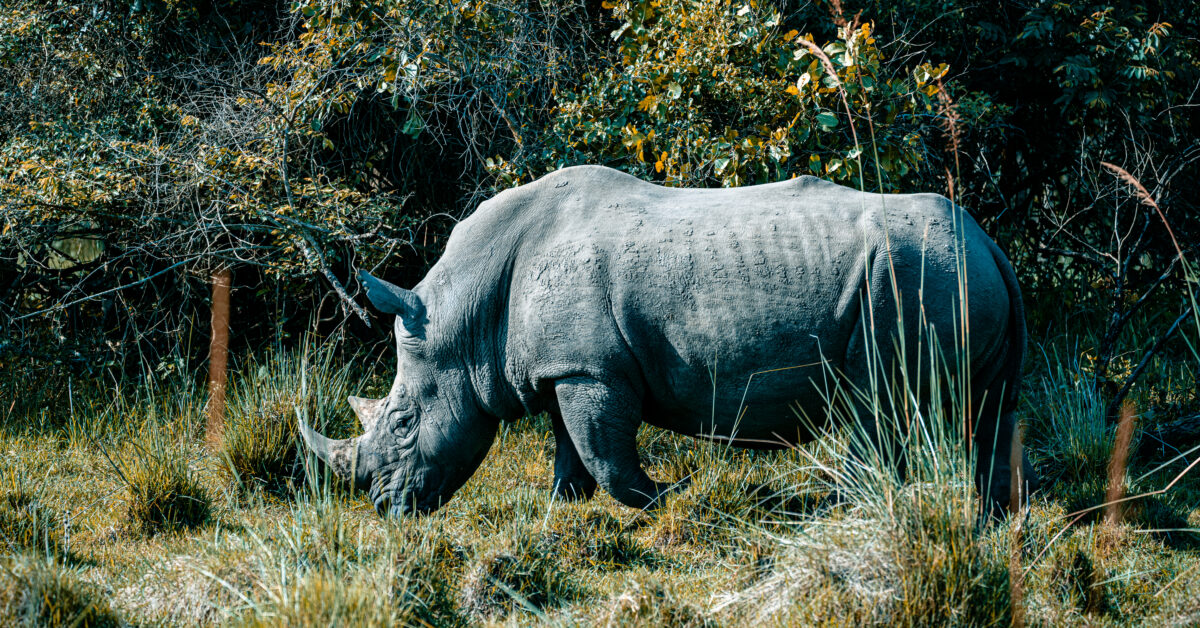
Augustu, the largest bull in the entire park. He was huge!
The Rangers
The topic of poachers came up in conversation more than once. I was very pleased to hear that the Ziwa Rhino Sanctuary has never lost a rhino to poachers, thanks to a very dedicated staff.
In addition to the fence, a team of approximately seventy-eight park rangers and security guards keep watch on the rhinos 24 hours a day, seven days a week.
As we watched the teenage rhinos, one of the rangers showed up to follow them around.
While I did see more than one armed ranger back near the lodge, this one was inexplicably unarmed. While Uganda doesn’t share the same controversial shoot-on-sight policy held by India’s Kaziranga National Park, anyone wishing to try their luck poaching in the Ziwa Rhino Sanctuary would surely be armed themselves. This feels like an officer safety issue in my opinion.
I did, however, snap a photo of his sweet ride!
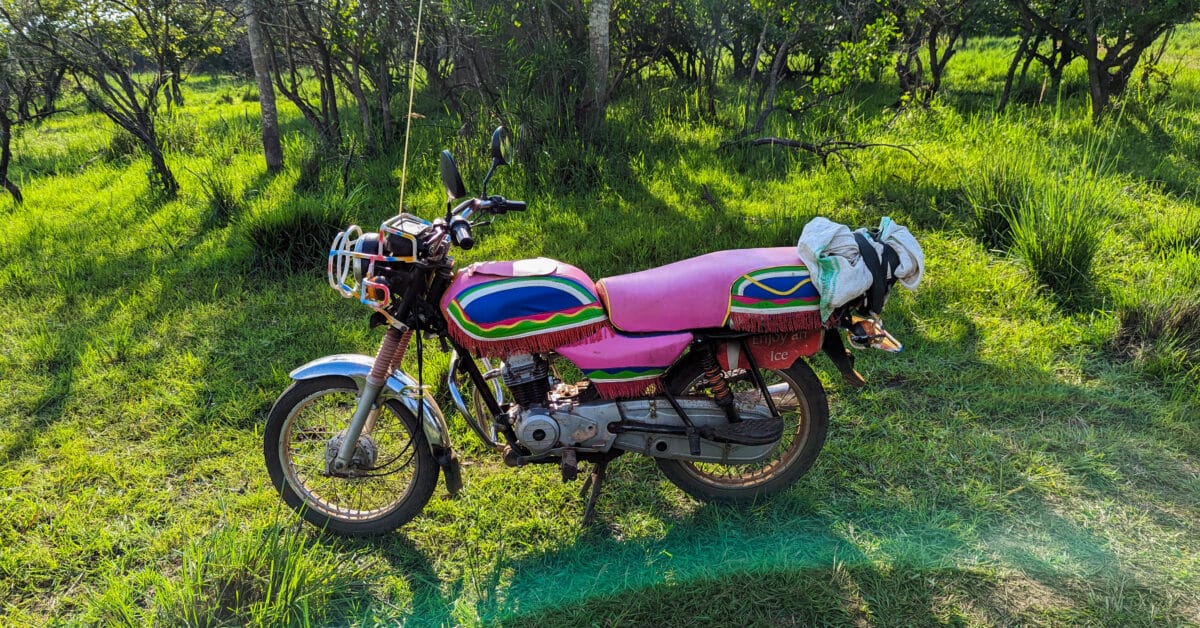
They see me rollin’
Cost
Cost is always a touchy subject for people, but one thing to remember in places like this, these aren’t for-profit parks. The money is used to keep things running, and for conservation. Because of this, I was glad to pay for rhino tracking in Uganda.
As with all points of interest in Uganda, there is an initial gate entry fee.
Entry Fee: $50
Park entry cost now includes Rhino Trekking by default.
Believe me, if you’re wondering where to see rhinos in Uganda, this is the place, and it’s well worth it!
Other tourist activities include birding, canoe rides, and nature walks. While I didn’t do any of these, I’ve always had good experiences with canoe rides in Africa.
Birding (Shoebill Storks): $25
Nature Walk: $20
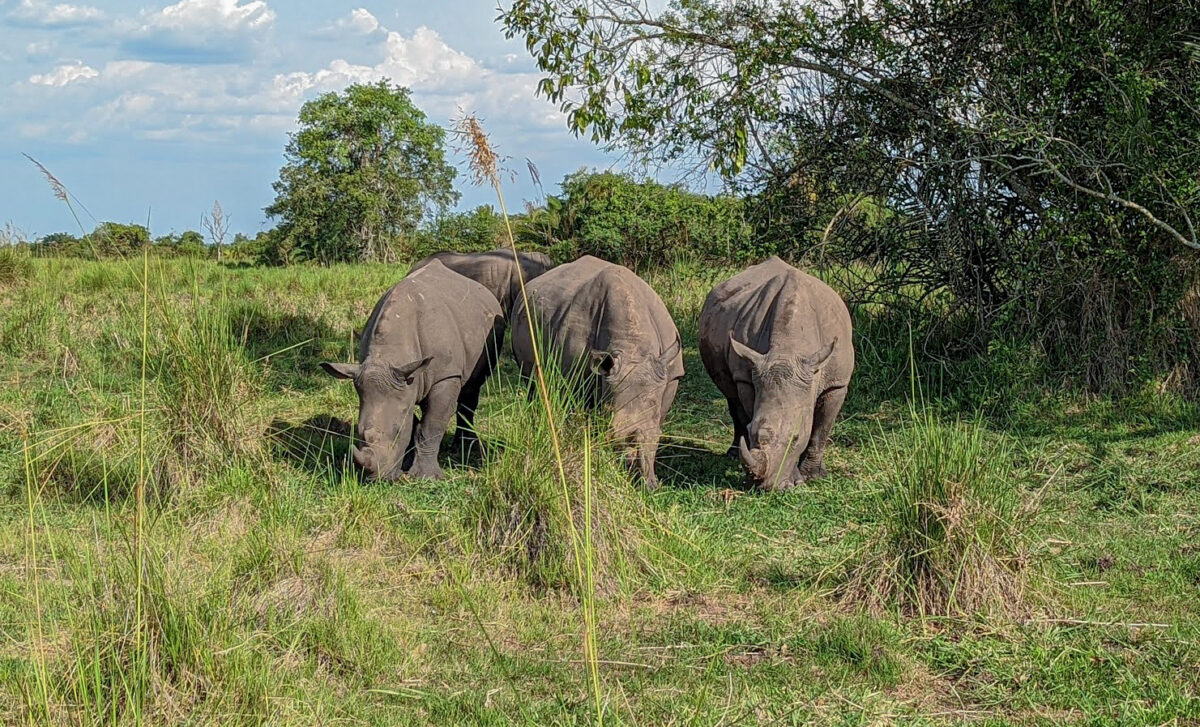
The bash brothers who managed to annoy the bull. Strength in numbers!
In addition to park fees, people are always welcome make a donation directly to the sanctuary. There are even programs that allow you to adopt a rhino.
Feeling generous? If you’re willing and able to make a large donation, you may even get the privilege of naming a future baby rhino! (Patrick is a good, strong name!)
What do you think? Did you want to know where to see rhinos in Uganda? Is this something you would be interested in doing? Rhinos have always been my most difficult find during game drives. I was happy for this great experience!
As always, don’t forget to comment and share!

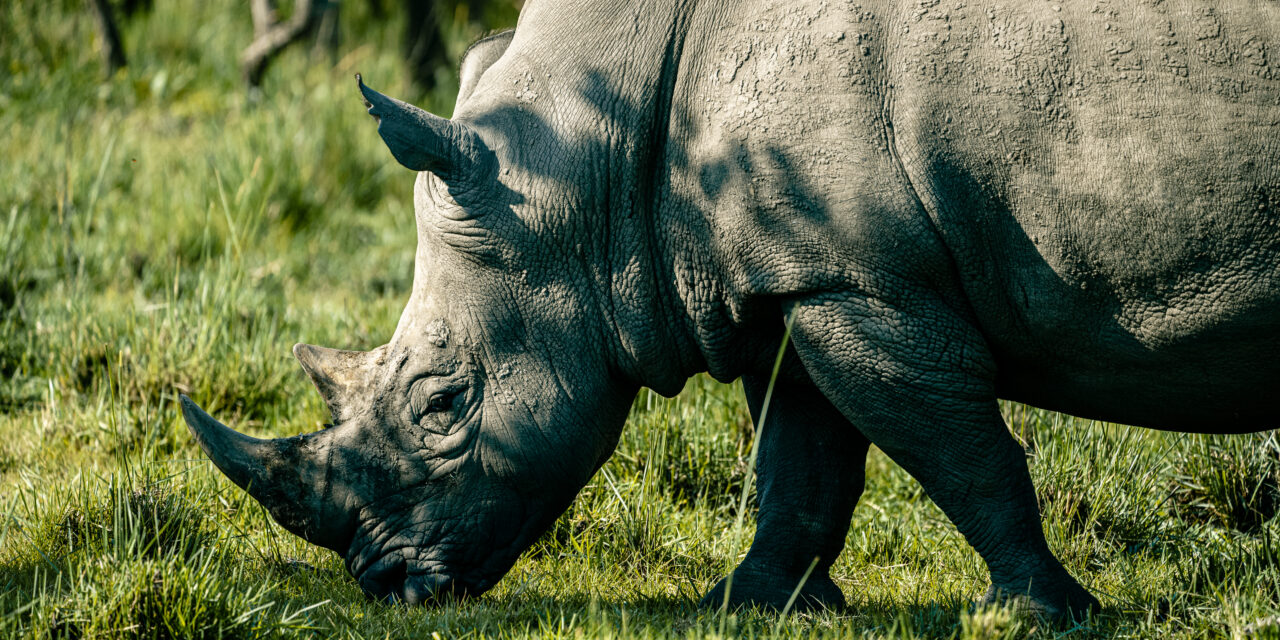
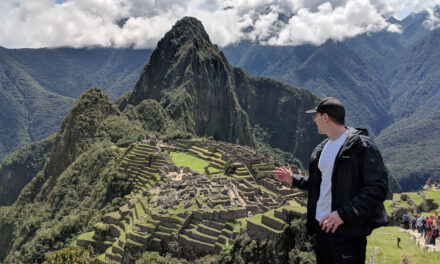
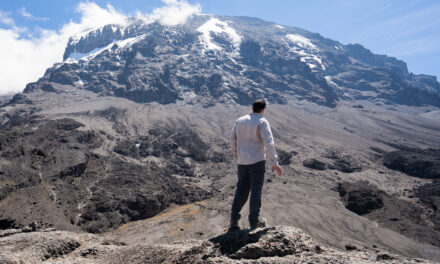



I, too, have always favored the big cats (and the small cats, honestly), so thank you for sharing about your rhino experience at the Ziwa sanctuary – great looking place.
Side note: That bull is ginormous 👀!
Yup, they’re my favorite. Still haven’t seen a tiger in the wild yet though. Some day.
He was a big boy lol big and pissed off… probably not the best combination for a wild animal lol
[…] much like with the rhinos of Uganda, over the years, gorillas have suffered catastrophic losses to their numbers through poaching, […]
[…] Ziwa Rhino Sanctuary in Nakitoma, Uganda offers you a truly unique experience. I’ve written a full post about the Ziwa Rhino Sanctuary, which you can find here, but the short of it is that this is the only place in Uganda where you’ll be able to see […]